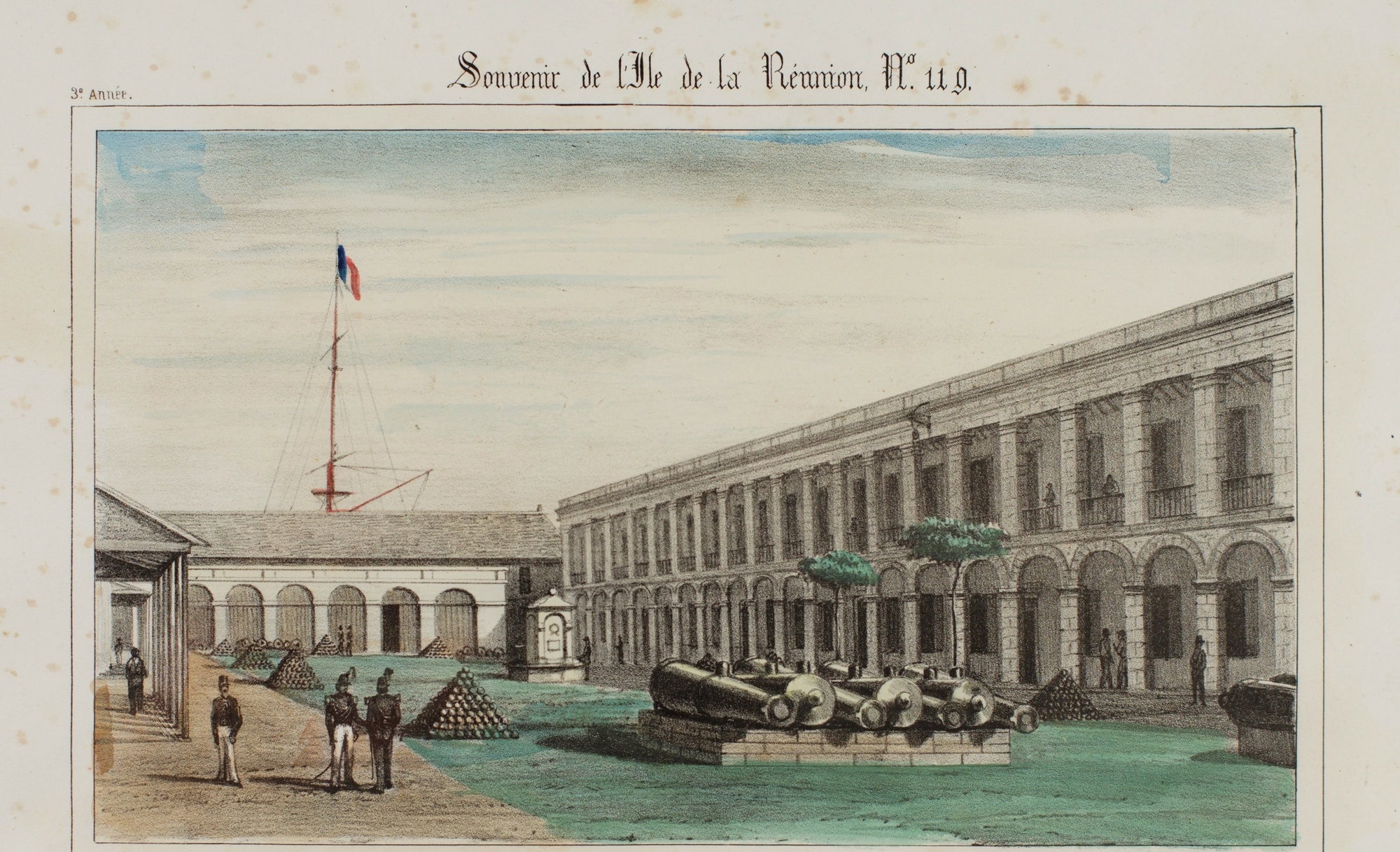
- Home
- Archaeology on Reunion Island
- A structured territory
- Military remains
Works to secure and protect the island’s sovereignty played a central role in shaping its organisation. Archival evidence supported by recent archaeological finds have much to tell us about the defensive system constructed from the 18th century onwards.
Vital defences
As the economy of Bourbon expanded, the Compagnie des Indes grew rich on the trade in coffee and other goods. This trade, centred on the coast, did not go unnoticed and the island was targeted by forbans. As conflicts between European nations spread to the Indian Ocean, it was also important to protect the island’s sovereignty and security.
Fortifying the coastline
Coastal batteries were built to protect mooring and unloading areas from 1735 onwards. The island’s first batteries were built in Saint-Paul on two defensive lines along the shore and behind the Étang wetland area. A powder magazine was then added to the defences. Five coastal batteries were built in Saint-Denis in 1756, along with a redoute and a powder magazine.
This system of fortifications and defence was abandoned at the end of the 19th century. Much of this defensive heritage has been destroyed by storms, the reuse of materials and coastal construction. Beside military structures, communication also played an important role in the island’s defence, as shown by its lookouts including those on the Cap Champagne and the Colline Saint-Gilles.
Associated media
Open Media Library

Map of the coastal batteries of Saint-Denis, 1868

Plan of battery no. 1, known as La Redoute, 1822

The redoubt in Saint-Denis (3D models)

Map of coastal batteries on the island of Bourbon, 1843

La Possession coastal battery

Canon anglais (Saint-Paul, Batterie « De l’Embouchure », 2007)

